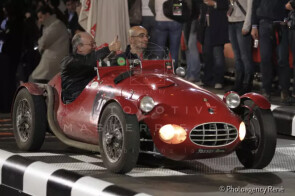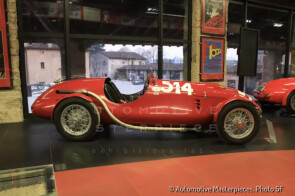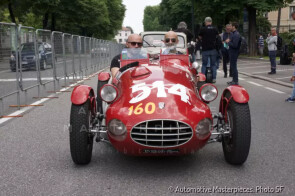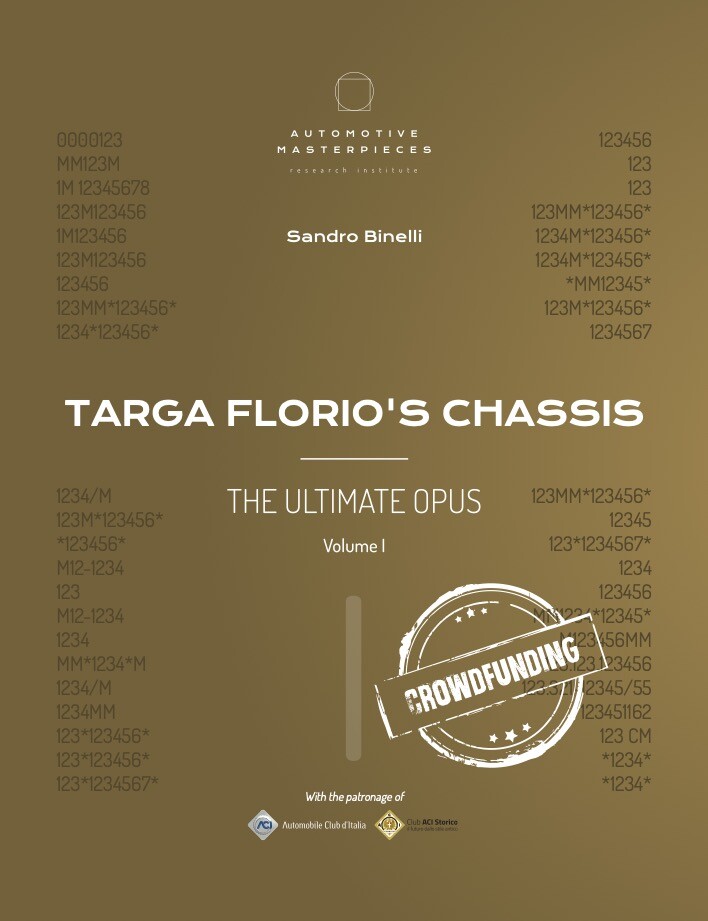
1948 Gilco Fiat 1100 Sport Stanguellini
ON/OFF
Why am I an Automotive Masterpiece?
Although the name Gilco often appears as a car manufacturer in the chronological excerpts of Sport cars, the factory only made the tubular frames of many of them but this was equivalent, due to the regulations in use in the Ministry of Transport at the time, to give the company the paternity of the car. With the name Gilco was called the small workshop that, using the tubes produced by Angelo Luigi Colombo, made the frames designed by Gilberto Colombo, son of Angelo Luigi. The decision of Gilberto to dedicate himself to the chassis, in 1946, was originated both by the desire to expand the production, then limited to the market of bicycle frames, and by the contacts with Enzo Ferrari, whom he had turned to for the purchase of some machine tools. Not a stranger to the decision was also the Professor Mario Speluzzi, notoriously linked to the world of motor racing as a technical consultant of the Scuderia Milan and of which Gilberto had followed the lessons at the Polytechnic. On the one hand, the adoption in Italy in 1947 of the international regulation for the Sport category, which liberalized the origin of the frames and the success, on the other, to have their tubulars approved by the Ministry of Transport opened Gilco a new thriving market, much larger than the few models built each year for Ferrari, then for Scuderia Milan and finally for Maserati. It is very difficult, today, to have a clear idea of the customers who turned to Gilco as the accounting books also show substantial payments by Cisitalia and Nardi, which the press has always described as manufacturers of their own chassis. The most probable hypothesis is, therefore, that Gilco has built frames for third parties not necessarily on Colombo project. The 750 chassis had a smaller success with the private sector because of the competition from the Giaur: a complete car costed less than a car assembled starting from a Gilco 750 chassis, that’s why the interest of customers fell from the 1951. The 203 chassis for larger displacement cars, instead, experienced greater luck being used by Renato Valenzi, Sergio Mantovani and lastly Gustavo Laureati.
The Fratelli Mariani body shop in via Monfalcone in Pistoia specialized in the construction of race cars with frames by Gilco at the end of the 1940s. We know that 5 sports cars have been made: one powered by a Fiat Giannini engine, two powered by Ermini engines. Another one with a Lancia Frediani engine had, instead, a Fiat 500 chassis. Among the cars made, the (Gilco) chassis 10-13058, was a torpedo Sport 1100 with a Fiat Stanguellini engine. The car was developed with the help of two friends of Modesto Biagioli, Carlo Bartolozzi and Alfredo Mariani, the assembly was done in the Biagioli workshop. The Fiat 1100 Stanguellini engine was developed by Carlo Bartolozzi of Prato, who probably had a motor grinding workshop at the time. Even the bodywork was made (or modified) on a design by Modesto Biagioli and made by Alfredo Mariani of the Mariani body shop in Pistoia. The assembly of the machine and the suspensions were made (or modified) by Biagioli in his workshop, with the help of Zarrino Mariotti, an employee mechanic. The car was taylor-made for the private racing driver Elio Checcacci and it’s very likely a one-off. With this car he ranked 2nd in class and 4th overall in the first Coppa della Toscana. He competed also in the 1949 Mille Miglia and Targa Florio but without success. From 1989, the car participated to lots of re-enactment events. From 1989 to 2018 participated to any edition of the Mille Miglia re-enactments.







